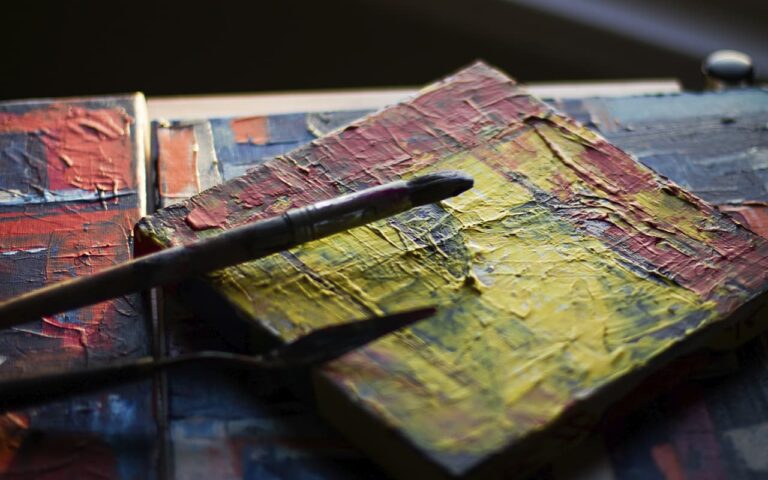Otis Marion Dozier was born on March 27, 1904 in Forney, Texas. He grew up on a farm in nearby Mesquite and developed a love of wildlife and nature, which later became the main subject of his art. In the early 1920s, his family moved to Dallas, where Dozier received his first artistic training from Vivian Ounspaugh, Frank Rea, and Cora Edge.
In the 1930s, Dozier began working with local artists in Dallas known as the Dallas Nine. He was a charter member of the Dallas League of Artists, exhibited his work at the Dallas Allied Arts, and taught at the Dallas School of Creative Arts from 1936 to 1938. During this period, while studying the works of Matisse, Picasso, Leger, Derain, and others, Dozier developed a style characterized by strong abstract forms and bright colors. By the mid-1930s, he intensified his painting and muted his palette to earthy grays, beiges, greens, and browns. Several of his works from this era focus on the plight of farmers dispossessed during the Great Depression. Dozier exaggerated the size of insects and animals, suggesting the influence of Surrealism, and several contradictory perspective systems show the influence of Cubism.
Local critics praised Dozier’s work, and he won awards at several Union Art Exhibitions and the Texas General Exhibitions. He completed murals at Forest Avenue High School and Texas A&M University, as well as for post offices in Giddings, Arlington, and Fredericksburg. He began to establish a national profile in the early 1930s when he exhibited his work at the International Watercolor Exhibition in San Francisco, the Museum of Modern Art in New York, and the First National Exhibition at Rockefeller Center in New York.
In the summer of 1938, Dozier received a scholarship to the Colorado Springs Center for the Visual Arts, where he studied with Boardman Robinson. Under Robinson’s influence, he developed a more spontaneous, fluid style, using tools such as ink-soaked paper, a burnt campfire stick, or his thumb. He created over 3000 sketches of the Rocky Mountains and ghost towns. He also developed expertise in lithography and participated in all circles of the Lone Star Printmakers.
In 1945, Dozier returned to Dallas, where he taught at Southern Methodist University and the Dallas Museum of Fine Arts. He had solo exhibitions at the Dallas Museum of Fine Arts, the University of Texas at Austin, and others. He went on to exhibit his work nationally at the Whitney Museum of American Art, the Metropolitan Museum of Art, and more.
Later in his career, Dozier developed a semi-abstract style, using a freer brushstroke and brighter colors. Although he moved away from the anecdotal subject matter of his 1930s work, he continued to use natural forms as a source of inspiration. He made sketches to Big Bend and the Gulf Coast, the Louisiana bayou, and the Four Corners area in New Mexico, Arizona, Utah, and Colorado. During the 1950s and early 1960s, he traveled to Italy, Spain, Turkey, India, Ceylon, Thailand, Japan, and Mexico. Examples of his later work were published in Otis Dozier: A Portfolio of Six Paintings and Pecos to Rio Grande: Interpretations of Far West Texas by Eighteen Artists.
Dozier married Velma Davis, a jeweler and ceramicist, in 1940. Their contribution to the cultural life of Dallas was celebrated in a 1974 exhibition organized by the Dallas Museum of Fine Arts, Salute to the Doziers of Dallas. Dozier died of heart failure on July 28, 1987.
Dozier’s works are represented in the permanent collections of the Museum of Contemporary Art Fort Worth, the Museum of Fine Arts, Houston, the Witte Museum, the McNay Art Museum, the Archer M. Huntington Art Gallery, and the University of Texas. Huntington Art Gallery at the University of Texas at Austin, Longview Museum of Fine Arts, Wichita Falls Art Museum, Panhandle Plains Historical Museum, Dallas Museum of Art, Southern Methodist University, Denver Art Museum, Newark Art Museum, Wadsworth Athenaeum Museum of Art, Whitney Museum of American Art, and the Metropolitan Museum of Art.

